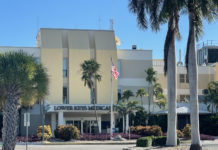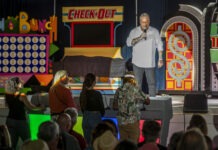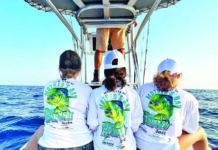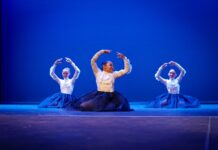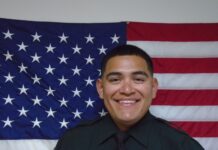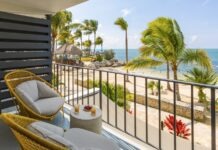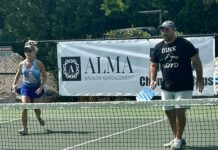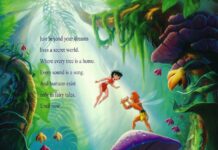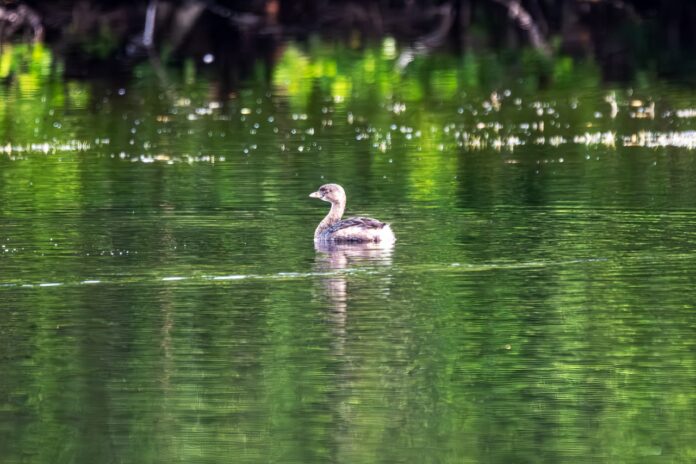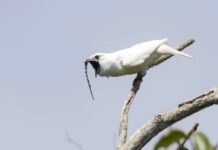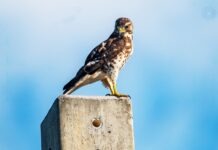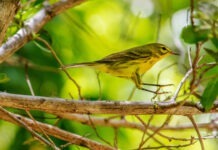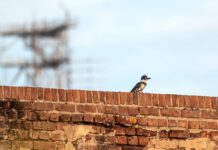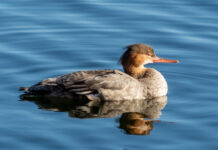Some days you just wake up with the idea of a place in your mind, and a strong desire to go there. You don’t know why. You just do. This particular morning it was a place called Lake Margaret up on Summerland Key.
It’s possible the urge came from the insane crowd that has packed Key West for the last few weeks – an island so infuriatingly full of people that every time you leave the house you run the chance of getting into a shouting match with someone in a car about how maybe they shouldn’t be menacing people in the crosswalk. It’s possible, now that the holidays are over, that, like a gopher popping his head above ground after Bill Murray failed to annihilate it, you inevitably crave a little nature, a little peace, a little non-humanity. It’s also possible that you find you’re writing about yourself in the third person for two paragraphs for reasons that are also a little unclear.
I didn’t beeline for Lake Margaret when I left the house. I didn’t want to squander the effort. I stopped along the way, scanning the edge of salt ponds on Boca Chica and Rockland Key, scanning from the boat ramps, and the old bridges in the Saddle Bunches. I even drove all the way down Sugarloaf Boulevard to Sammy Creek Landing, where I sat under the bridge for a while like a troll, hoping to see something cool.
There were birds – a lofty brown pelican here, a great egret in the mangroves there – but there weren’t so many and they were generally far away.
I have never managed to write down the address of Lake Margaret, so I could put it in my phone and find it easily. I typically arrive after driving down various same-looking side streets that all look kind of right until I find the one that actually is. This trip I somehow managed to drive straight there, getting out of the truck and closing the door quietly so as not to scare any potential birds.
The name Lake Margaret is a bit grand. Pond Margaret might be more apt, but doesn’t scan as well. It’s an old borrow pit, maybe 30 yards across, 50 yards long, full of brownish water, lined with mangroves and the ghostly gray snags of buttonwoods killed off in Hurricane Irma. There isn’t any tidal flow from the ocean, except when the tide gets high, and rain seems to leave it somewhere between a brackish and freshwater lens.
I climbed carefully over the guardrail and sat on the sky-blue, two-plank bench that someone had kindly installed, and settled in. As I half expected, there weren’t really any birds to be seen. A turkey vulture flew low over the edge of trees. The wind came up and scuffed the surface of the water.
A turtle – a red-eared slider – kept sticking its eyes and nostrils up above the water near me, then sinking down below the surface whenever I lifted my camera. We played a slow-speed, cat-and-mouse/celebrity-vs.-paparazzi game for a while until I managed a decent shot. Immediately afterward, another turtle came from behind to bite him in the back of the neck, and they both sank into the murk into a slow-paced world of turtle-on-turtle violence.
I saw my first bit of avian wildlife somewhere over in the deadwood – a little flicker I first thought was a warbler – maybe a palm or a Louisiana waterthrush. But when I lifted my binoculars it was actually a small brown bird in the water, a thing called a pied-billed grebe.
Grebes are adorable little birds that spend nearly all their time in the water. They live lives very similar to ducks, but are not ducks. Instead of webbed feet they have lobed toes to propel them through the water. Instead of looking somewhat comedic when they walk on land, they look incredibly awkward and generally only do it if they are being chased, and then they’ll run with their body nearly vertical, their bill barely forward of their chest, like a cartoon bear that can’t keep up with its legs.
The not-so-great-on-land thing is largely a product of evolutionary specialization. They are so all-in on swimming that their legs stick out the back of their body, more like propellers than feet, as if drawn by a kid who doesn’t know where a bird’s legs should go.
They are hardly ever seen in flight because, if approached by a predator, they have a much better chance of escaping underwater. And when they migrate, they do so at night, landing in whatever lake or pond they can find just before sunup.
The name “pied” has nothing to do with baked goods, or smashing baked goods into people’s faces. It means having two different colors. In breeding season, pied-billed grebes get a strongly contrasting black band around their mostly pale, almond-shaped bill. In non-breeding season (winter), their bill just looks more like an almond.
Pied-billed grebes’ tendency to dive underwater, disappear for a good number of seconds, then pop up in some other random part of the lake is one of the things I like most about them.
They generally do this when feeding, trying to catch fish, shrimp, crabs and whatever else they can. But trying to track them is not unlike a free range version of Whack-a-mole, sans mallet.
This grebe had apparently had his fill, though, and was mostly just floating like a bathtub toy.
Outside of breeding season, pied-billed grebes tend toward the solitary. I once wrote something about how this was always the case — about how you never saw more than one pied-billed grebe in any body of water — and ever since it was printed in ink on paper, every time I’ve seen a pied-billed grebe, there have been one or two others in the same body of water, though in their own little territory. It just shows the danger of declarative sentences when writing about wildlife.
Last week I wrote something about how Bonaparte’s gulls are pretty rare in the Keys, and as if to drive home the point about declarative sentences, as I was sitting there, another Bonaparte’s gull came fluttering in and landed a few feet from the grebe.
I suppose I could take it personally that the universe seems to enjoy unraveling things I say with any confidence, but then, if the universe keeps showing me cool birds, I’ll take it.
